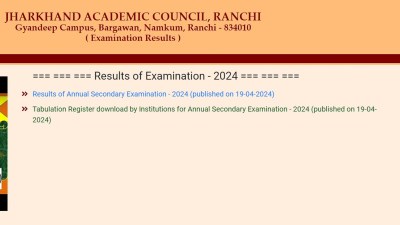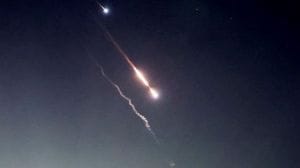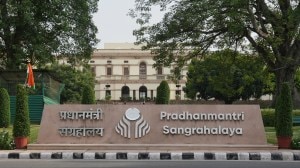- India
- International
Iron Man 2.0
It’s just over a month to go for the inauguration of Statue of Unity, which at 182 metres would be the world’s tallest statue. From wind and the structure’s unique shape, to Sardar Patel’s posture and face, The Indian Express takes a measure of the challenges since construction began in Jan 2016, as the statue enters the final countdown.
 The height of the statue of Unity’ is 597 ft. Express Photo by Bhupendra Rana
The height of the statue of Unity’ is 597 ft. Express Photo by Bhupendra Rana
Just specks against the folds of the Statue of Unity’s dhoti, three workers in yellow hard hats and orange fluorescent safety jackets take a lift up 155 metres carrying patterned bronze sheets with buttons moulded on them, to form the structure’s jacket, taking 10 minutes to cover the distance from the ground to the chest. Down below, the other labourers at work are about the size of the statue’s smallest toe, shod in a sandal.
With a little over a month to go for inauguration, “the world’s tallest statue”, dedicated to Sardar Vallabhbhai Patel, stands at about 120-130 metres height — minus the head and shoulders, which will together add up to the final 182-metre (597-feet) plan. The ‘182’ number was picked to match the total Assembly constituencies in Gujarat, and will make the Statue of Unity more than double the 93-metre Statue of Liberty, off the coast of New York City. From sea level, the height would be 237.35 metres — the 70-metre hillock of Sadhu Bet having been flattened to 55 metres to lay the foundation. Prime Minister Narendra Modi is to come for the unveiling on October 31, Sardar Patel’s birthday, and with BJP leaders admitting it could mark the launch of the party’s 2019 Lok Sabha poll campaign, time is of the essence.
Work is on at five major sites that make up the Rs 2,989 crore project. Apart from the statue itself, these include the walkway, the ticket counter, the food court, the four-lane approach highway, the yard where the parts are being assembled, and the Shrestha Bharat Bhavan (a 52-room three-star lodging facility). Altogether, 4,076 labourers are at work, divided into two shifts. Around a thousand of those are working on the cladding of the statue alone, which has been forged in China. They include around 800 locals and about 200 workers from China, who have been working in batches for two-three months each since September 2017.
 Chinese workers at the site. Express Photo by Bhupendra Rana
Chinese workers at the site. Express Photo by Bhupendra Rana
With the countdown beginning, three security personnel, two home guards and three State Reserve Police personnel were recently deployed to guard the site, while new checkposts have come up. Right now, no outsider is allowed closer than 250 metres to the Sardar; from there, all you can see is his feet. The statue itself is visible from a 7-km radius, dwarfing a landscape once known for its dam, that ironically fought a long and hard battle to its eventual 163-metre height.
They began with the feet in January 2016, moving on next to the dhoti, the knees and then the shawl flung over the statue’s shoulders, reaching all the way down. This was five years after Modi, then CM of Gujarat, on October 6, 2010, announced such a statue on the occasion of 50 years of formation of the state, to come up on Sadhu Bet hillock in Kevadia Colony, home to the Sardar Sarovar Project on the Narmada river. Modi promised “a world-class statue befitting the stature of the Iron Man of India” — “double the height of Statue of Liberty and four times that of Christ the Redeemer in Rio de Janeiro”.

SEE PHOTOS | Iron Man 2: The making of world’s tallest statue of Sardar Patel
A Sardar Vallabhbhai Patel Rashtriya Ekta Trust was set up, and soon after Modi became PM in 2014, the Gujarat government handed the construction contract to a multi-firm consortium. L&T was picked as the executing firm, while the consortium includes Michael Graves Architecture & Design and Turner Construction, which previously developed the Burj Khalifa, the tallest building in the world.
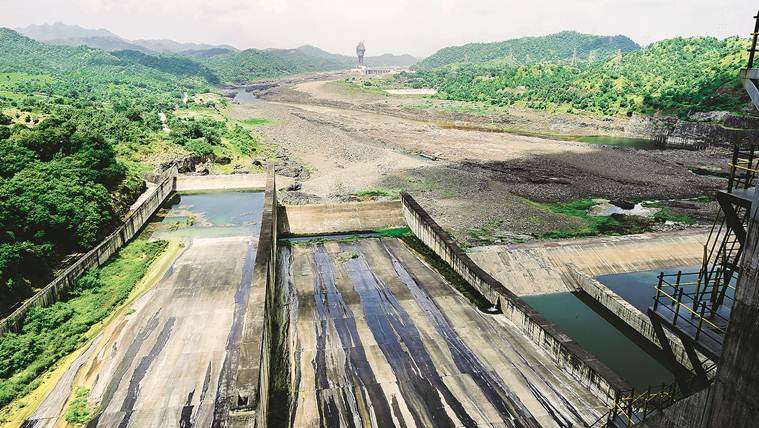 Express Photo by Bhupendra Rana
Express Photo by Bhupendra Rana
Says an L&T official, “The construction has been done in four stages, including a mock-up, 3D scanning technique as well as a computer numerical control production technique for accurate reproduction of minute details.”
It was on L&T’s recommendation, say officials, that Chinese foundry Jiangxi Tongqing Metal Handicrafts Co. Ltd (or the TQ Art foundry) was chosen to mould the cladding, that essentially makes up the bronze statue. An official who was part of the planning process but has retired since says that in April 2015, a team of engineers visited several foundries in India and abroad before picking TQ Art. “There are a few well-known foundries in India but none has the expertise to cast a bronze statue as tall as this. They are mostly foundries sculpting statues of up to 100-150 feet. This particular Chinese foundry is known for its bronze casts and has several intricate statues to its credit,” the official adds.
What also decided matters in favour of the Jiangxi unit, which is spread over 50,000 sq feet and employs close to 1,000 skilled workmen, was that it was at the time working on what was then the world’s tallest bronze statue. The 62-metre statue has since been installed in China.
“The speed with which they were willing to complete the casting was also a factor,” says the retired official. “The project always had an October 2018 deadline, given the 2019 general elections, and the project could not be delayed by bringing in foundries that were not equipped to handle this kind of project.”
 The selection of the TQ Art foundry was somewhat of a departure from Modi’s call during his 2014 poll campaign to build the statue from “iron farm tools” collected from across India, to represent the “unified India” that Sardar Patel stood for. This was part of Modi’s Ek Bharat Shrestha Bharat slogan, and the movement to collect iron for the statue was compared to the drive to collect bricks for the Ram temple in Ayodhya. It was spearheaded by the NGO Citizens for Accountable Governance, mentored by election strategist Prashant Kishor (who has recently joined the JD-U).
The selection of the TQ Art foundry was somewhat of a departure from Modi’s call during his 2014 poll campaign to build the statue from “iron farm tools” collected from across India, to represent the “unified India” that Sardar Patel stood for. This was part of Modi’s Ek Bharat Shrestha Bharat slogan, and the movement to collect iron for the statue was compared to the drive to collect bricks for the Ram temple in Ayodhya. It was spearheaded by the NGO Citizens for Accountable Governance, mentored by election strategist Prashant Kishor (who has recently joined the JD-U).
On December 15, 2013, Patel’s death anniversary, Modi flagged off 1,000 trucks to travel to seven lakh villages, carrying about three lakh empty kit boxes, to collect soil and the scrap-iron farm implements.
By 2016, 135 metric tonnes of iron had been collected in various forms, but mostly scrap. After much deliberation on the unusable condition of this scrap, about 109 tonnes was used to make the foundation of the statue after undergoing processing.
Officials are tight-lipped about most details regarding the project, and an L&T engineer only lets in reluctantly that the statue will have about 1,850 metric tonnes or 18.5 lakh kilogrammes of bronze cladding in all. The amount of steel and concrete used would be several times more.
This cladding is in the form of 5,000-odd bronze panels, cast by the TQ Art foundry under the watch of the statue’s award-winning designer, Ram V Sutar. These panels were transported over sea and then by road, before being matched and assembled at an off-site workshop in Kevadia Colony.
All the required cladding is now in, and currently, an 8-metre prototype of Patel’s head lies at the workshop, to guide workers in assembling the last set of bronze panels over the next few weeks. Says a top officer, “We have installed a 12-feet statue of Sardar, as well as a 30-feet Patel statue outside the Sachivalaya. But when you make things larger and larger, it is essential to get the features right.”
Among other things. A member of the engineering team working closely with the TQ Art foundry says, “The Chinese workers have been handed out specific instructions on the ‘aura’ the facade should carry. The company was told that as per Sutar’s original design, the statue has to have a poised countenance, with Patel’s head held high and arms by his sides. It should emit a feeling of power as well as warmth. The statue is also supposed to appear as if it is walking on water, towards the Sardar Sarovar dam, with its left leg slightly forward.”
 A view of the statue from the Sardar Sarovar dam, located 3.5 km upstream. Express Photo by Bhupendra Rana
A view of the statue from the Sardar Sarovar dam, located 3.5 km upstream. Express Photo by Bhupendra Rana
All these specifications, including showing Patel’s legs clad in a dhoti and his feet in sandals, mean the statue is thinner at the base than the top. This is unlike other tall statues, which have a wider base for stability. Besides this, the designers and engineers had to account for the wind factor, given the location and height of the Patel statue, and to factor in the possibility of earthquakes. An official says, “Many times, workers had to pause construction to allow the wind to calm down.”
Officials met this challenge by keeping the slenderness ratio between the top and bottom half of the Patel statue to 16:19 — significantly higher than the 8:14 ratio norm in tall buildings.
A top Sardar Sarovar Narmada Nigam Ltd (SSNNL) official says the statue can sustain wind velocity of 220 km/hour and earthquakes measuring up to 6.5 on the Richter Scale, which are at a depth of 10 km and within a radius of 12 km of the statue.
The statue is located amidst remote, mountainous terrain, which posed another difficulty, in delivery of materials. While most of the stone removed during the levelling of Sadhu Bet hillock was used to support the podium, access to the statue, which is essentially an island, was ensured through two methods. Eight months of the year, the island is accessible from at least one side via land as the water levels recede post monsoon. So a rock bridge was constructed to ensure access over this low level of water, while a Bailey bridge has been built for when water levels are high during the rains. The statue base also stands above the flood level of the nearby Narmada dam.
What helped the engineering teams was the dam itself, a gigantic monument in its own right. Although it is very different in its shape and materials used, its construction showed that high-quality concrete could be mixed and placed in this mountainous region. While the Narmada dam utilises concrete strength of 16 MPa (160 kg/cm2), in the statue’s podium and foundation, concrete strength varies from 40MPa to 65 MPa.
There was another lesson from the Narmada dam that came in handy. Materials required to build the statue pale in comparison to what went into the dam as far as amounts go. And so, officials were confident about transporting materials to the site using trucks, barges and temporary bridges.
Engineering teams first constructed the core wall, the RCC spine of the statue. Steel frames were affixed on this to hold together the bronze cladding, which forms the final facade of the statue. The cladding system is designed to have overlapping panels, allowing for vertical and horizontal movement, to resist earthquake and wind forces. The RCC core has a coupling wall to add rigidity and connect the cores. These concrete cores house the elevators and stairways which are to take visitors right up to the chest height of the statue.
Altogether, the statue is divided into five zones. Up to its shin is the first zone, comprising three levels, including an exhibit floor, mezzanine and roof. It will contain a Memorial Garden and a large museum. The Gujarat government has signed an MoU with the Union Ministry of Culture to secure original letters written by Patel to place in the museum. “The museum will include the timeline of Patel’s life, from his birth in Karamsad to his rise as the Iron Man of India as well as his personal life and attachment to Gujarat. He did extensive flood relief work in the state in 1927. He also rebuilt the Somnath temple, which is very important for Gujarat,” an official says.
Zone 2 extends up to the statue’s thighs at 149 metres, while Zone 3 goes up to the viewing gallery at 157 metres. Zone 4 and Zone 5 would be out of reach of visitors, with Zone 4 comprising the maintenance area and Zone 5 the head and shoulders.
The viewing gallery will be accessible through two elevators located in the statue’s core, with a carrying capacity of 40 people each. While the initial plan was to allow visitors up to the structure’s head and to have a viewing gallery running through the eyes, this was dropped as unfeasible. Says an official, “The wind conditions do not favour a viewing gallery at that height. The chest is the maximum to which visitors can be safely allowed.” The gallery, with space to accommodate up to 200 people at a time, would provide a view of the Satpura and Vindhyachal mountain ranges, which also form the point where Madhya Pradesh, Gujarat and Maharashtra meet. Visitors can also get a distant view of the 212-km-long Sardar Sarovar Reservoir, and the 12-km-long Garudeshwar Reservoir — the latter will help ensure there is always water around the statue, which is located downstream from the Narmada dam.
In the lobby area at the entrance of the statue, a Museum and Audio Visual Gallery will feature 15-minute presentations on the life of Patel and the tribal culture of Gujarat, to entertain tourists awaiting their turn to go up. Says an official, “The concept is very similar to Burj Khalifa. There visitors are shown audio-visual presentations on the construction of Burj Khalifa. We have an advantage that the statue is not just a building but a tribute to a great personality.”
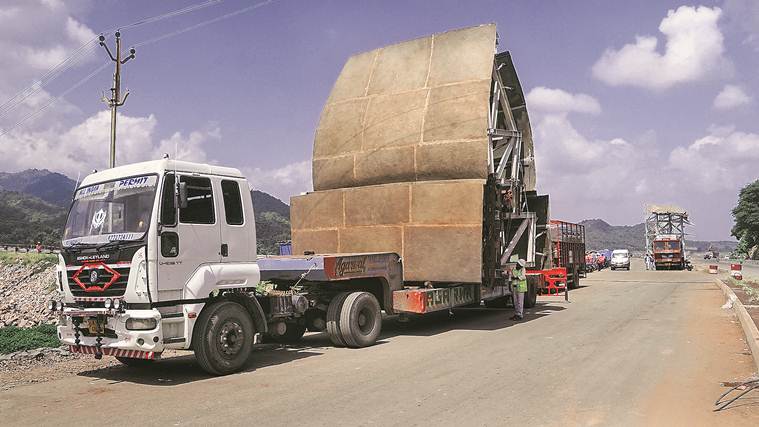 Bronze cladding arriving for the statue; workers take 10 min to cover distance from the ground to chest in this lift. Express Photo by Bhupendra Rana
Bronze cladding arriving for the statue; workers take 10 min to cover distance from the ground to chest in this lift. Express Photo by Bhupendra Rana
Once the statue opens, plans are afoot to have an amphibian bus that can run on both land and water from Kevadiya to the statue site, as well as for a jetty service from the dam site to the statue. SSNNL officials say bids have been invited for a ropeway cable car as another means to reach the statue.
Besides, along the banks of the Narmada, work is on to make a ‘valley of flowers’, notwithstanding the rocky terrain. “We have used artificial soil to cover more than 200 hectares. We are planting perennial plants,” says Additional Principal Chief Conservator of Forests Dr D K Sharma.
Chief Secretary J N Singh, who was the Managing Director of SSNNL when the Statue of Unity was commissioned, and is a member of the trust for its construction, says completing the statue is a matter of pride for the state. “The significance is at two levels. One is that the statue stands for so much that Sardar Patel has given to this country to unify it. On another level, the statue is going to turn around the fortunes of the Narmada district as it will become one of the most important tourist attractions in India, if not the world.”
About the inaugural ceremony on October 31, Singh adds, “It is extremely significant that the foundation was laid by Modiji when he was the Chief Minister, and that he will inaugurate the project now.”
But from Kevadia to Jiangxi, 4,200 km away, everybody associated with the project knows that in the end, it will all come down to the face. And that day is near. Earlier this month, work began on the last few metres, comprising the head and shoulders.
“We have set aside two weeks in the beginning of October to complete the face,” says an L&T official.
***
THE TIMELINE
Oct 2013: Foundation stone laid by then Gujarat CM Narendra Modi
Oct 2014: L&T awarded contract. Construction of the base begins by reducing Sadhu Bet hillock to size
April 2015: Geo-technical and hydrological surveys completed. Wind tunnel tests undertaken. Detailed light, shadow study conducted to determine the orientation
Dec 2015: Round-the-clock concreting of 3-metre-deep raft foundation for six days to ensure bearing capacity
Jan 2016: Construction of RCC cores begins, beginning with feet of the statue
Oct 2016: Construction of RCC cores completed up to 25 metres of the statue, just above the ankles
June 2017: Statue core wall, statue base, statue base arches completed. Statue completed up to 59 metres or the shin
Sept 2017: RCC cores reach up to the height of the statue’s knees, or 90 metres
Dec 2017: Steel structural base affixed; bronze cladding begins
Feb 2018: RCC cores completed up to 151 metres, or near the statue’s chest
July 2018: RCC cores completed up to 157 metres, where there will be a viewing gallery
TALLEST STATUES IN INDIA CURRENTLY
Paritala Anjaneya Temple
Location: Vijayawada, Andhra Pradesh
Height: 135 feet (41 metres)
The Lord Hanuman statue, which was inaugurated on June 22, 2003, stands on a 15-foot-high pedestal. Construction began on April 30, 2001, under prominent sculptor Jaan Babu of Peddapuram, who was assisted by 25 artistes. The statue is made of roller-compacted concrete. It was commissioned by Venkateshwara Rao Ramadas Swami, a temple priest and devotee of Lord Hanuman, who currently manages the temple. The 2.5-acre land was gifted by his relatives based in Hyderabad. The total cost, including the 50-foot-deep foundation was Rs 2.5 crore.
Thiruvalluvar Statue
Location: Kanyakumari, Tamil Nadu
Height: 133 feet (40.6 metres)
The statue of the Tamil poet and philosopher, sculpted by Dr V Ganapati Sthapati, was installed in 2000. It was built by the state government at a cost of Rs 6.14 crore. The statue is placed on a 38-foot-high pedestal. The project was conceived by then Chief Minister M Karunanidhi in 1975, and the foundation stone was laid by former Prime Minister Morarji Desai in 1979, when M G Ramachandran was the Chief Minister. The sculpting of the statue was started in 1990 by Sthapathy and the work was completed in 1999.
TALLEST STATUES IN THE WORLD CURRENTLY
Spring Temple Buddha
Location: Lushan County, Henan, China
Height: 420 feet (128 metres)
The statue was built between 1997 and 2008. With its 82-foot-tall pedestal, the monument rises to a total height of 502 feet (153 metres). The project cost $55 million, of which nearly $18 million was spent on constructing the statue. Beneath the statue is a Buddhist monastery.
Laykyun Sekkya
Location: Khatakan Taung, near Monywa, Myanmar
Height: 381 feet (116 metres)
The statue of Buddha stands on a 44 feet (13.5 metres) throne. Construction began in 1996 and it was completed on February 21, 2008. The statue has 31 floors, referring to the 31 realms of life cycle as per Buddhist literature.
Apr 19: Latest News
- 01
- 02
- 03
- 04
- 05











